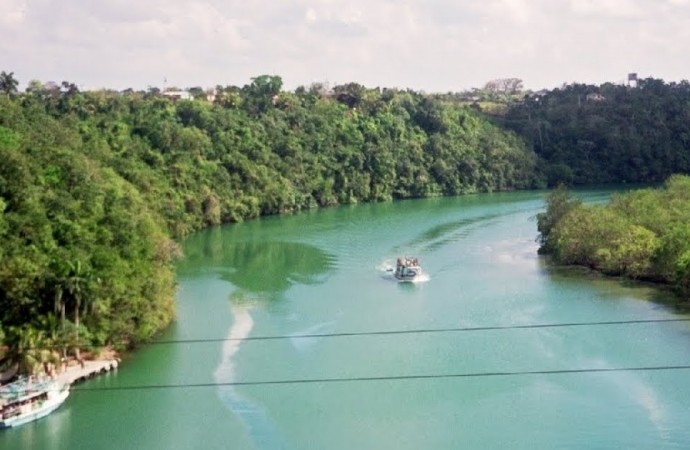The Canimar River Massacre July 6, 1980 The Canimar River Massacre Source: https://cubatruthproject.blogspot.com/2007/03/canimar-river-massacre.html 56 assassinated by the Cuban government on July 6, 1980 for attempting to flee Cuba The Canimar is a scenic Cuban river that flows into Matanzas Bay, near Varadero beach. In 1980, a tourist excursion service was inaugurated using the “XX Aniversario,” a
The Canimar River Massacre July 6, 1980
July 6, 1980 for attempting to flee Cuba
The Canimar is a scenic Cuban river that flows into Matanzas Bay, near Varadero beach. In 1980, a tourist excursion service was inaugurated using the “XX Aniversario,” a large boat with two decks of chairs and capacity for 100 passengers. It was to navigate for approximately 5 miles inland along the Canimar river.
On 6 July, 1980, the excursion boat was hijacked by three youngsters who wanted to flee Cuba and take the boat to the United States –Ramón Calveiro Leon (15 years old) and the brothers Silvio Aguila Yanes (18 years old) and Sergio Aguila Yanes (19 years old). Sergio was a Sergeant in the Cuban Armed Forces. Another youngster involved in the plot, Humberto Martínez Echazabal (19 years old), reportedly never made it when the hijacking took place.
Upon taking control of the vessel, the youngsters shouted: “To Miami!” amid screams of approval on the part of the surprised 100 passengers. The security guard resisted and shot at the youngsters, who wounded him with firearms they had brought aboard. Concerned for his health, they placed him on a fisherman’s boat that came along, together with a passenger who wanted to leave, sending them back to shore. Upon arriving, they alerted authorities. Meanwhile, the “XX Aniversario” had turned around and heading out to open seas.
Julián Rizo Alvarez, Secretary of the Communist party in Matanzas Province, commanded a chase. He dispatched two high-speed Cuban Navy patrol boats with orders to prevent the escape, sinking the vessel if necessary. They opened fire on the excursion boat and the youngsters fired back. When the patrol boat withdrew, several dead and wounded passengers were left on the deck of the “XX Aniversario.” A Cuban Air Force plane then opened fire, leaving more dead and wounded on the bloodied deck.
The excursion boat was very close to international waters when a huge boat rammed it the middle, sinking it. The surviving passengers, now in the water, soon had to contend with sharks attracted by all the blood. Silvio Aguila Yanes dove into the water and saved several survivors from drowning. Ten survivors were taken ashore by authorities.
The Cuban government claims that the “XX Aniversario” was accidentally sunk when waves forced the larger vessel to collide with it. It did not allow communal funerals for the victims. Survivors were ordered to keep silent and to never gather in groups with more than two of them present. For several years, government agents monitored their activities while they and victims’ relatives were offered gifts of televisions and appliances usually reserved for high government officials.
The Cuban government claims that Sergio Aguila Yanes committed suicide, while others report he was taken from the water by the crew of the Cuban Navy patrol boats and never seen again. Silvio Aguila Yanes serves a 30-year prison sentence at “Combinado del Este” prison in Havana. Witnesses report he has been subjected to psychiatric torture with large doses of psychotropic drugs. 15 year-old Roberto Calveiro served time in prison but reportedly was released and lives in exile.
The toll of this disaster was 56 victims: eleven bodies recovered and forty-five went missing at sea. Among the children assassinated, Lilian González López, age 3, Marisol Martínez Aragonés, age 17, Osmanly Rosales Valdés, age 9, and Marisel San Juan Aragonés, age 11.
Haydée Santamaría Hart, veteran of the 1953 attack on the Moncada Army barracks, Director of the “Casa de Las Americas,” and wife of the then Cuban Minister of Education, was a final indirect victim of this tragedy. Immediately after the Canimar River tragedy, she visited the hospitals in the city of Matanzas, where survivors were receiving medical attention. One month later, on July 26, 1980. Haydee, already in despair after the “Mariel” boat exodus, committed suicide.




















Leave a Comment
Your email address will not be published. Required fields are marked with *